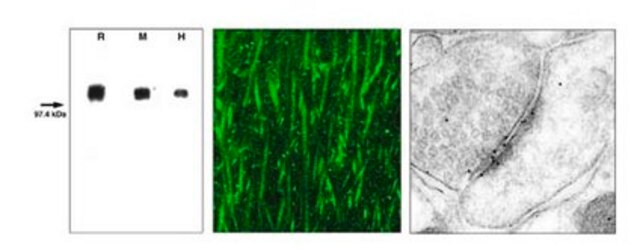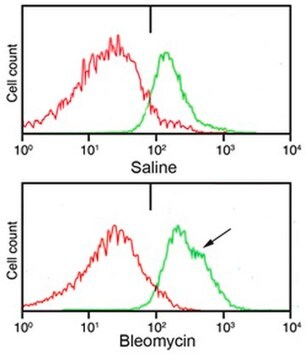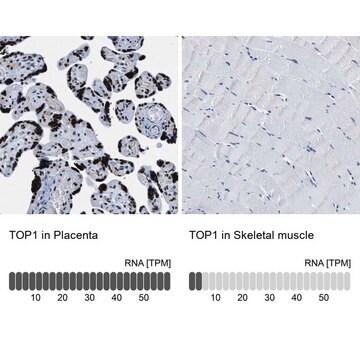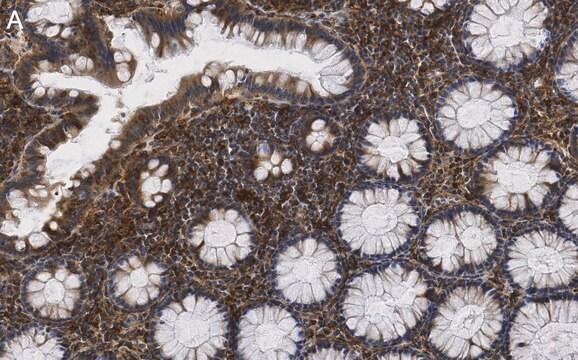MAB3328
Anti-MMP-14 Antibody, catalytic domain, clone LEM-2/15.8
clone LEM-2/15.8, Chemicon®, from mouse
Synonim(y):
MT1-MMP
About This Item
Polecane produkty
pochodzenie biologiczne
mouse
Poziom jakości
forma przeciwciała
purified immunoglobulin
rodzaj przeciwciała
primary antibodies
klon
LEM-2/15.8, monoclonal
reaktywność gatunkowa
mouse, human
opakowanie
antibody small pack of 25 μg
producent / nazwa handlowa
Chemicon®
metody
ELISA: suitable
immunoprecipitation (IP): suitable
western blot: suitable
izotyp
IgG1κ
numer dostępu NCBI
numer dostępu UniProt
Warunki transportu
ambient
temp. przechowywania
2-8°C
docelowa modyfikacja potranslacyjna
unmodified
informacje o genach
human ... MMP14(4323)
Opis ogólny
Specyficzność
Immunogen
Zastosowanie
Cell Structure
MMPs & TIMPs
Immunohistochemistry: Frozen and paraffin-embedded tissues
Immunofluorescence
Flow Cytometry
Blocking: 10-15μg/mL
Optimal working dilutions must be determined by the end user.
Postać fizyczna
Przechowywanie i stabilność
Inne uwagi
Informacje prawne
Oświadczenie o zrzeczeniu się odpowiedzialności
Nie możesz znaleźć właściwego produktu?
Wypróbuj nasz Narzędzie selektora produktów.
polecane
Kod klasy składowania
12 - Non Combustible Liquids
Klasa zagrożenia wodnego (WGK)
WGK 2
Temperatura zapłonu (°F)
Not applicable
Temperatura zapłonu (°C)
Not applicable
Certyfikaty analizy (CoA)
Poszukaj Certyfikaty analizy (CoA), wpisując numer partii/serii produktów. Numery serii i partii można znaleźć na etykiecie produktu po słowach „seria” lub „partia”.
Masz już ten produkt?
Dokumenty związane z niedawno zakupionymi produktami zostały zamieszczone w Bibliotece dokumentów.
Nasz zespół naukowców ma doświadczenie we wszystkich obszarach badań, w tym w naukach przyrodniczych, materiałoznawstwie, syntezie chemicznej, chromatografii, analityce i wielu innych dziedzinach.
Skontaktuj się z zespołem ds. pomocy technicznej








